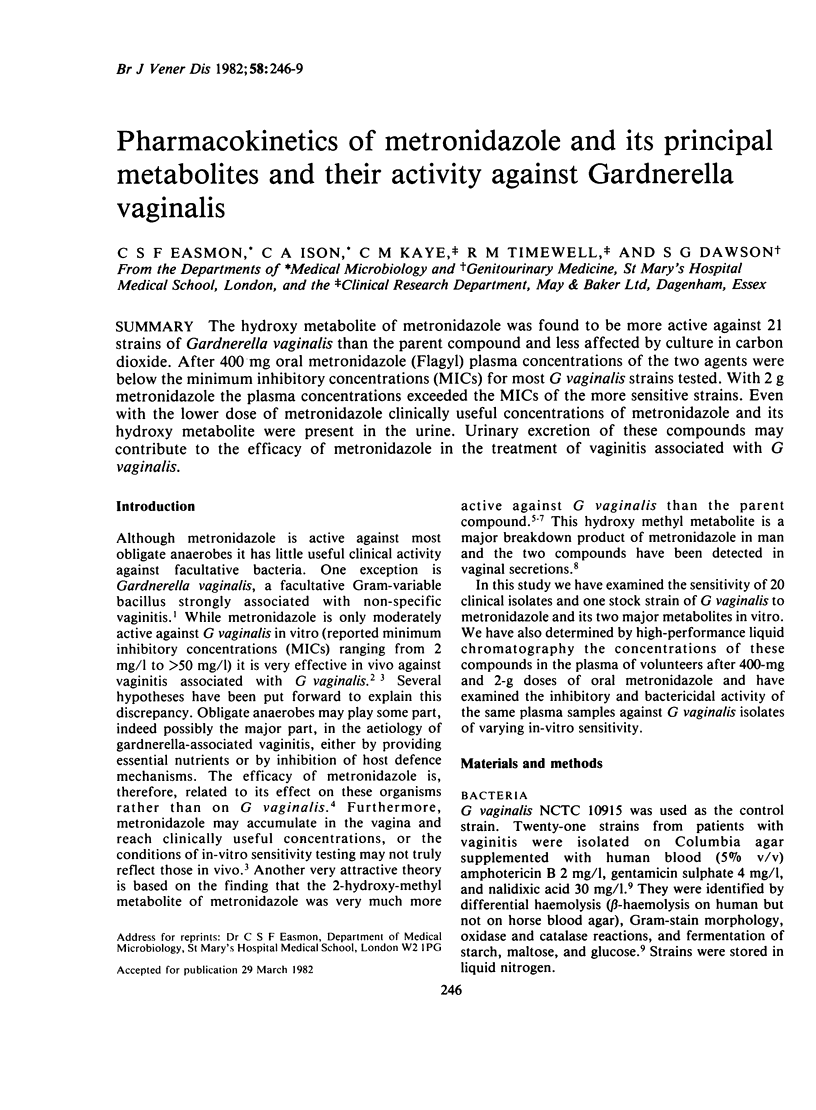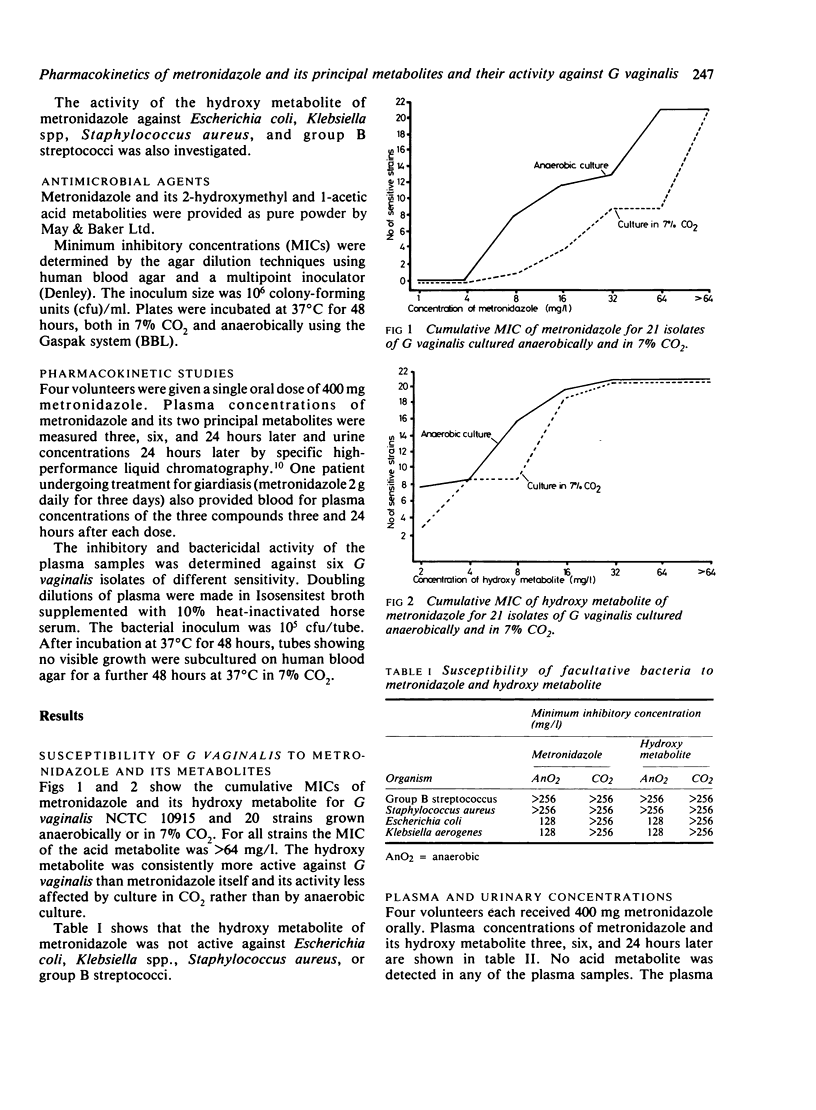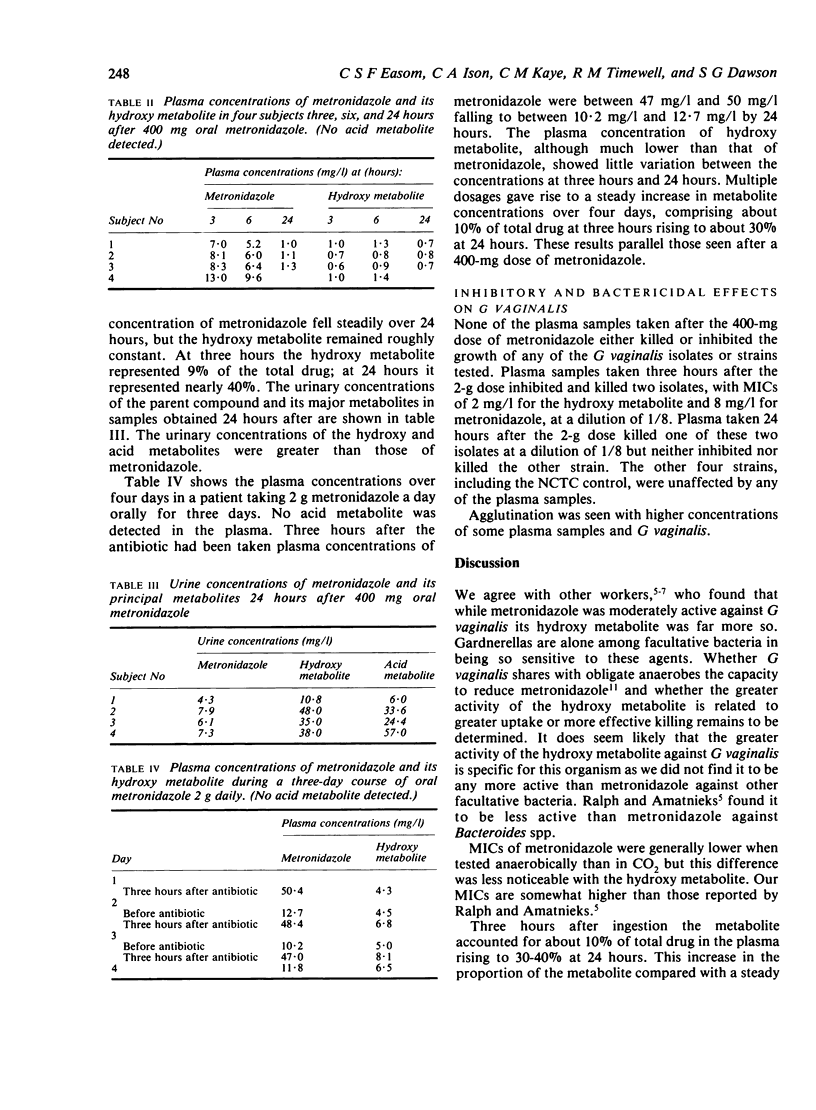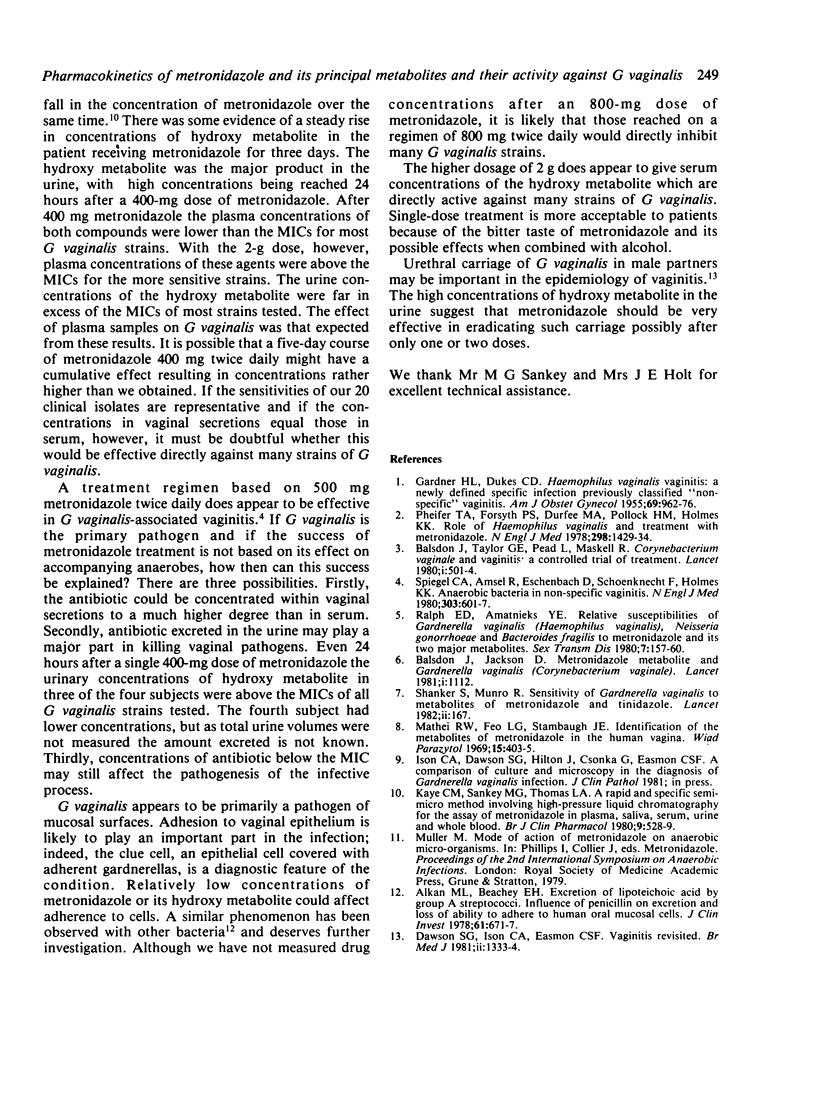Abstract
The hydroxy metabolite of metronidazole was found to be more active against 21 strains of Gardnerella vaginalis than the parent compound and less affected by culture in carbon dioxide. After 400 mg oral metronidazole (Flagyl) plasma concentrations of the two agents were below the minimum inhibitory concentrations (MICs) for most G vaginalis strains tested. With 2 g metronidazole the plasma concentrations exceeded the MICs of the more sensitive strains. Even with the lower dose of metronidazole clinically useful concentration of metronidazole and its hydroxy metabolite were present in the urine. Urinary excretion of these compounds may contribute to the efficacy of metronidazole in the treatment of vaginitis associated with G vaginalis.
Full text
PDF



Selected References
These references are in PubMed. This may not be the complete list of references from this article.
- Alkan M. L., Beachey E. H. Excretion of lipoteichoic acid by group A streptococci. Influence of penicillin on excretion and loss of ability to adhere to human oral mucosal cells. J Clin Invest. 1978 Mar;61(3):671–677. doi: 10.1172/JCI108979. [DOI] [PMC free article] [PubMed] [Google Scholar]
- Baldson M. J., Jackson D. Metronidazole metabolite and Gardnerella vaginalis (Corynebacterium vaginale) Lancet. 1981 May 16;1(8229):1112–1112. [PubMed] [Google Scholar]
- Balsdon M. J., Taylor G. E., Pead L., Maskell R. Corynebacterium vaginale and vaginitis: a controlled trial of treatment. Lancet. 1980 Mar 8;1(8167):501–503. doi: 10.1016/s0140-6736(80)92762-2. [DOI] [PubMed] [Google Scholar]
- Dawson S. G., Ison C. A., Easmon C. S. Vaginitis revisited. Br Med J (Clin Res Ed) 1981 Nov 14;283(6302):1333–1334. doi: 10.1136/bmj.283.6302.1333-c. [DOI] [PMC free article] [PubMed] [Google Scholar]
- GARDNER H. L., DUKES C. D. Haemophilus vaginalis vaginitis: a newly defined specific infection previously classified non-specific vaginitis. Am J Obstet Gynecol. 1955 May;69(5):962–976. [PubMed] [Google Scholar]
- Kaye C. M., Sankey M. G., Thomas L. A. A rapid and specific semi-micro method involving high-pressure liquid chromatography for the assay of metronidazole in plasma, saliva, serum, urine and whole blood. Br J Clin Pharmacol. 1980 May;9(5):528–529. doi: 10.1111/j.1365-2125.1980.tb05856.x. [DOI] [PMC free article] [PubMed] [Google Scholar]
- Manthei R. W., Feo L. G., Stambaugh J. E. Identification of the metabolites of metronidazole in the human vagina. Wiad Parazytol. 1969;15(3):403–405. [PubMed] [Google Scholar]
- Pheifer T. A., Forsyth P. S., Durfee M. A., Pollock H. M., Holmes K. K. Nonspecific vaginitis: role of Haemophilus vaginalis and treatment with metronidazole. N Engl J Med. 1978 Jun 29;298(26):1429–1434. doi: 10.1056/NEJM197806292982601. [DOI] [PubMed] [Google Scholar]
- Ralph E. D., Amatnieks Y. E. Relative susceptibilities of Gardnerella vaginalis (Haemophilus vaginalis), Neisseria gonorrhoeae, and Bacteroides fragilis to Metronidazole and its two major metabolites. Sex Transm Dis. 1980 Oct-Dec;7(4):157–160. doi: 10.1097/00007435-198010000-00001. [DOI] [PubMed] [Google Scholar]
- Shanker S., Munro R. Sensitivity of Gardnerella vaginalis to metabolites of metronidazole and tinidazole. Lancet. 1982 Jan 16;1(8264):167–167. doi: 10.1016/s0140-6736(82)90412-3. [DOI] [PubMed] [Google Scholar]
- Spiegel C. A., Amsel R., Eschenbach D., Schoenknecht F., Holmes K. K. Anaerobic bacteria in nonspecific vaginitis. N Engl J Med. 1980 Sep 11;303(11):601–607. doi: 10.1056/NEJM198009113031102. [DOI] [PubMed] [Google Scholar]


